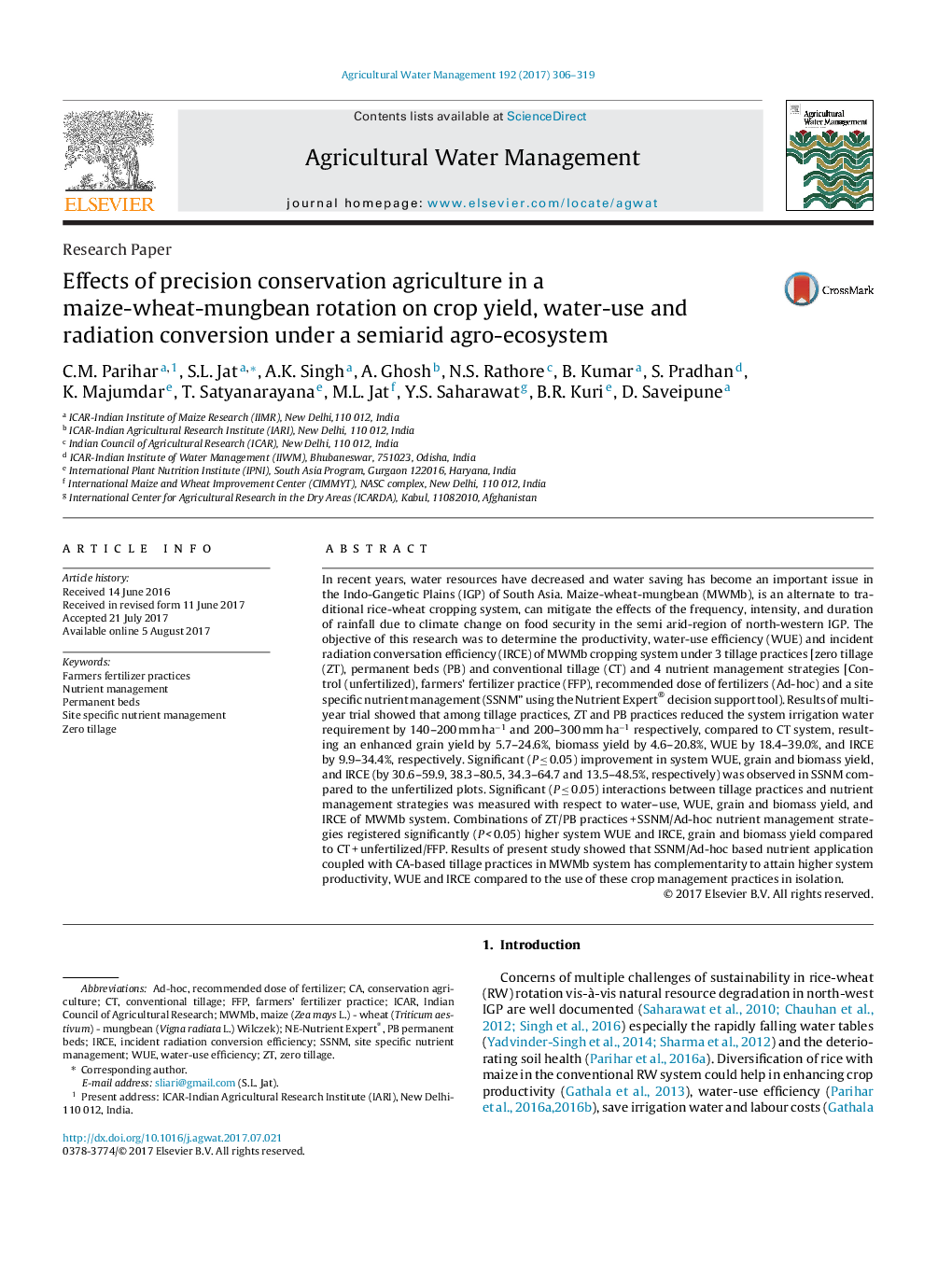| کد مقاله | کد نشریه | سال انتشار | مقاله انگلیسی | نسخه تمام متن |
|---|---|---|---|---|
| 5758439 | 1622888 | 2017 | 14 صفحه PDF | دانلود رایگان |
- 3-Tillage and 4-nutrient practices studied in 3-year on maize-wheat-mungbean system.
- Zero tillage increased yield, water and incident radiation use efficiency than conventional.
- Site specific and Ad-hoc based nutrient application enhanced resource use efficiency over famer fertilization.
- Mungbean in Maize-Wheat system had positive impact on yield and resource efficiency.
In recent years, water resources have decreased and water saving has become an important issue in the Indo-Gangetic Plains (IGP) of South Asia. Maize-wheat-mungbean (MWMb), is an alternate to traditional rice-wheat cropping system, can mitigate the effects of the frequency, intensity, and duration of rainfall due to climate change on food security in the semi arid-region of north-western IGP. The objective of this research was to determine the productivity, water-use efficiency (WUE) and incident radiation conversation efficiency (IRCE) of MWMb cropping system under 3 tillage practices [zero tillage (ZT), permanent beds (PB) and conventional tillage (CT) and 4 nutrient management strategies [Control (unfertilized), farmers' fertilizer practice (FFP), recommended dose of fertilizers (Ad-hoc) and a site specific nutrient management (SSNM” using the Nutrient Expert® decision support tool). Results of multi-year trial showed that among tillage practices, ZT and PB practices reduced the system irrigation water requirement by 140-200 mm haâ1 and 200-300 mm haâ1 respectively, compared to CT system, resulting an enhanced grain yield by 5.7-24.6%, biomass yield by 4.6-20.8%, WUE by 18.4-39.0%, and IRCE by 9.9-34.4%, respectively. Significant (P â¤Â 0.05) improvement in system WUE, grain and biomass yield, and IRCE (by 30.6-59.9, 38.3-80.5, 34.3-64.7 and 13.5-48.5%, respectively) was observed in SSNM compared to the unfertilized plots. Significant (P â¤Â 0.05) interactions between tillage practices and nutrient management strategies was measured with respect to water-use, WUE, grain and biomass yield, and IRCE of MWMb system. Combinations of ZT/PB practices + SSNM/Ad-hoc nutrient management strategies registered significantly (P < 0.05) higher system WUE and IRCE, grain and biomass yield compared to CT + unfertilized/FFP. Results of present study showed that SSNM/Ad-hoc based nutrient application coupled with CA-based tillage practices in MWMb system has complementarity to attain higher system productivity, WUE and IRCE compared to the use of these crop management practices in isolation.
Journal: Agricultural Water Management - Volume 192, October 2017, Pages 306-319
